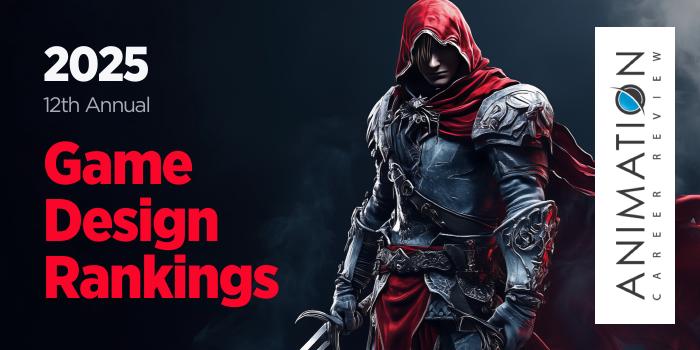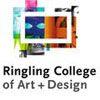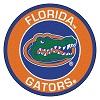Ringling College of Art and Design (RCAD) is the only freestanding art and design school in the state of Florida. For students interested games, the school has BFAs in Game Art and Virtual Reality Development. Students in both programs have opportunities to gain hands-on industry experience working on real world projects through RCAD’s experiential learning initiative—INDEX.
INDEX activities take place in the classroom, the Design Center, studio labs, the Maker Space, and through the ART Network. INDEX also highlights client competitions, immersive experiences, internships, elective courses, and volunteering. All students also benefit from industry critiques by successful visiting artists and participation in the Game Developers Conference (GDC) in San Francisco.
The Game Art BFA program at Ringling College of Art and Design follows the studio model of teaching, which emphasizes learning by doing. Students in this 120 credit hour program will work on team projects to develop collaborative, technical, and communication skills. Students will create works in state-of-the-art facilities equipped with the latest software used by both AAA and indie studios. Examples include Houdini, Adobe Substance Suite, Unreal Engine, Maya, and ZBrush.
Of the 120 credit hours required to complete the Game Art BFA, 48 are in the major. Course examples include History of Game Art; Digital Painting for Game Art; Game Design I-III; Color and Perspective Drawing; 2D and 3D Design; Visual Development for Games I-II; Programming for Artists; 3D for Games I-IV; Development of Art and Ideas; and 3D Modeling.
The Game Art BFA culminates with the Game Thesis Project completed across four courses including Game Thesis Preproduction; Game Thesis Project 1A; Game Thesis Project 1B; and Game Thesis Project II. The Thesis totals 15 credit hours.
The Virtual Reality Development BFA at Ringling College of Art and Design is a 120 credit hour program that focuses on the creation, design, and analyzing of immersive experiences. This includes mastering story structures; utilizing game engine technology in the creation of immersive experiences; innovating VR ideas; navigating the production pipeline for 3D VR; and utilizing specific software for creating 3D databases. Through projects and coursework, students will also master the art of communication, develop collaboration skills, and become well-versed in professional practices.
Of the 120 credit hours for the Virtual Reality Development program, 51 credits are dedicated to the major. Course examples include Introduction to Virtual Reality; 2D and 3D Design; Concept Development for Virtual Worlds; Immersive Media Design I-IV; 3D Technical Art; Iterative Design; Visual Scripting; Programming for Immersive Media; and Visual Development: UI/UX Design.
Open electives totaling 12 credit hours allow students to enhance the degree by specializing in an area of interest. Students may also select six credit hours of general electives and 12 elective credits in art and design history.
The RCAD Virtual Reality Development BFA culminates with the VR Thesis/Capstone completed across three courses: VR Thesis Preproduction, VR Capstone Project I, and VR Capstone Project II. This culminating experience totals 15 credit hours.
Graduates of the Game Art and Virtual Reality Development BFA programs are prepared to pursue careers in game art, design, development, and programming; virtual reality design, development, and programming; and user interface/user experience (UI/UX) design; architecture; military and law enforcement; education and training; advertising and marketing; art and design; healthcare and fitness; sports; tourism and travel; wellness; and automotive.
The Game Art BFA attracts recruiters from major studios such as Blizzard Entertainment, Epic Games, Riot Games, and Bungie. RCAD Game Art graduates have been hired at these and other major companies and studios such as Electronic Arts (EA), Rockstar Games, Microsoft, Hasbro, Netflix, Bethesda, Naughty Dog, and Meta.
Virtual Reality Development graduates have the opportunity to work at places such as Epic Games, ILM Immersive (Lucasfilm’s storytelling studio), Microsoft, General Motors (GM), Meta, Kinetic Vision, Baobab Studios, 3D Forensic, Immersive Health Group, Vu Studios, Halon Entertainment, AECOM, and Mote Marine Labs.
Founded in 1931, Ringling College of Art and Design is a private, not-for-profit college that began as a collaboration between circus baron John Ringling and Dr. Ludd M. Spivey—then president of Southern College. The school launched as a remote branch of Southern College named The School of Fine and Applied Art of the John and Mable Ringling Art Museum. Around 75 students and 13 faculty members arrived for the school’s first class.
Today, Ringling College of Art and Design sits on a 48-acre campus that serves approximately 1,670 students enrolled in 11 different majors leading to a BFA degree, two majors leading to a BA, and 10 minors. In addition, RCAD recently launched an undergraduate Artificial Intelligence (AI) certificate. This is the first program of its kind at an art and design college.
Ringling College of Art and Design is accredited by the National Association of Schools of Art and Design (NASAD) and the Southern Association of Colleges and Schools Commission on Colleges (SACSCOC).







